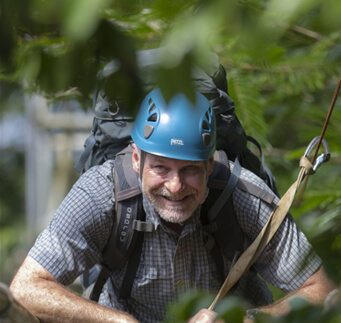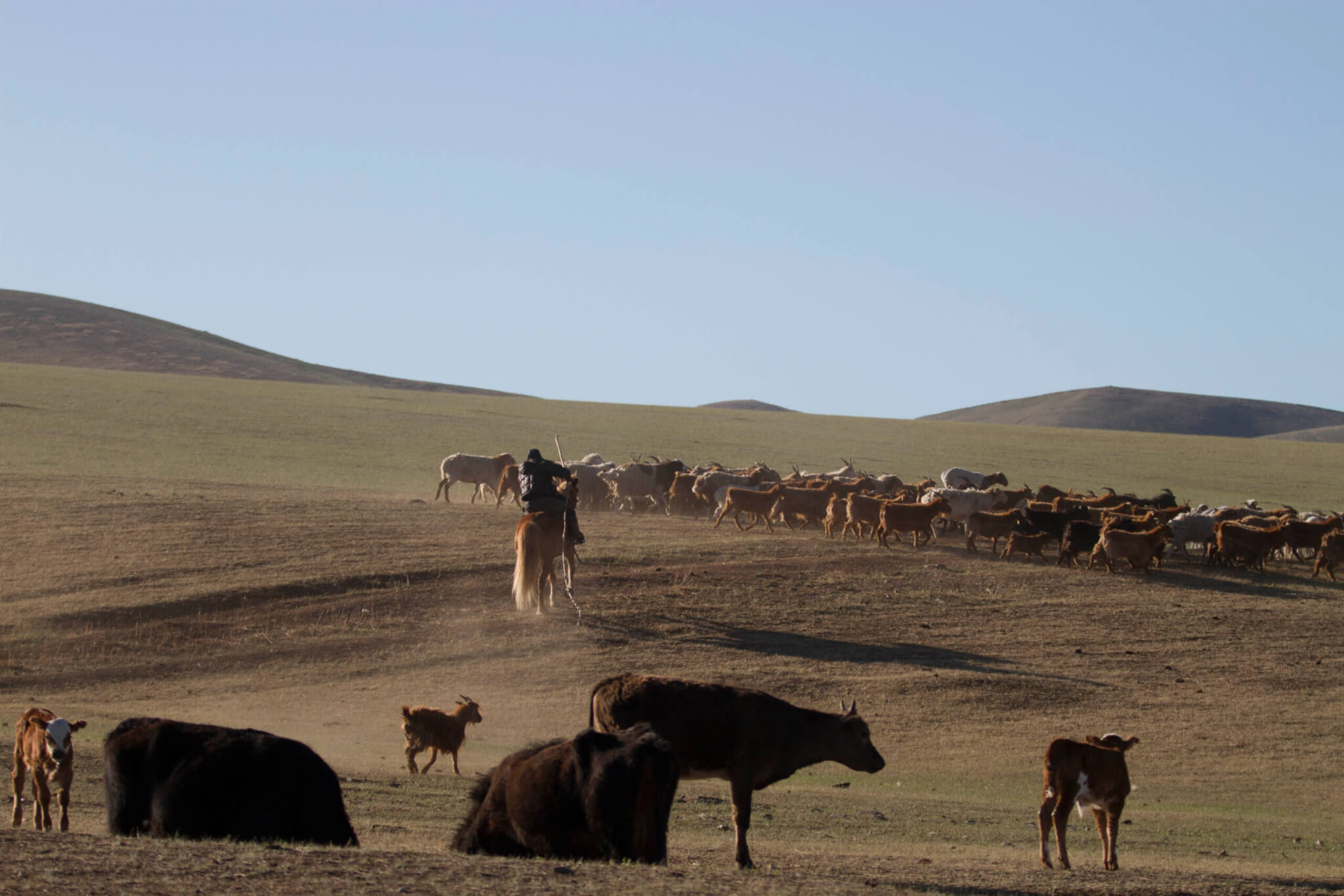Purdue researchers explore how sound drives Mongolian herder cultural practices
In the grasslands of Mongolia, young goat herders gather at the rivers and streams near their parents’ birthplaces and listen intently. Then they practice their throat singing — guttural sounds that have been made for countless generations amongst the herders — until their voices match the resonance patterns they hear from the water.
“It’s a harmonization of the herder as singer, their parents and the landscape altogether,” said Bryan Pijanowski, professor of landscape and soundscape ecology. “They’re paying homage to all those things through their sonic practices. This is an important part of the culture of herding pastoralism. The sounds of nature are part of who they are.”
Pijanowski is leading a multi-disciplinary effort to study the relationships Mongolian herders have with their landscapes through the lens of sound. His team, consisting of ecologists, social scientists and ethnomusicologists, received $750,000 from the National Science Foundation for the first two years of a four-year project.

For thousands of years, the herders have been stewards of their lands, with sound key to informing their practices. Pijanowski said he wants to understand the many ways herders use sounds as cues to support their way of life, pass on their stories and prudently manage the natural resources they rely on.
“I once asked a herder what would happen if all the natural sounds they rely on went away, and he said that ‘we would no longer be human,’” Pijanowski said. “That is an existential kind of statement about the oneness these herders have with their land and sound. As non-traditional land users move in and develop these places, will they understand how to responsibly sustain those resources if they’re unfamiliar with the sounds the signal changes in the landscape? What happens to the sustainability of these grasslands as the sounds in and around them change?”
Laura Zanotti, a professor in Purdue’s Department of Anthropology, said sound can tell anthropologists much about how people interact with their environment and how a place has changed over time.

“We can listen to songs and stories and discuss with herders about what is happening today in the landscape. Maybe they don’t match, and that gives us clues about what has changed with the land over time,” Zanotti said. “We know that herders use environmental sounds to make decisions about their animals, and as development encroaches on their lands, the soundscape also changes. We want to work with herders to better understand how these changes impact their relationships to animals, the land, and place-based soundscapes.”
Jennifer Post, an ethnomusicologist at the University of Arizona, said she’s worked with Mongolian herders for decades. She’s fascinated by how they use songs to soothe animals and make their milk flow more freely or how the songs of certain birds are cues to tell them it’s time to move the herd and settlement to a new location.

milk flow more easily. (Photo provided by Jennifer Post)
“For me, this is a multi-species study. Mongolian herders rely on their knowledge of other species to make decisions about what they need to do,” Post said. “We’ve long worked separately, but American and European scientists need to come to recognize that for many there is no division between arts and sciences. The social-ecological model that is used to understand the relationships between people and their environments has to include a clearer place for culture.”
Pijanowski said that in addition to the social scientists included on the team, Mongolian herders will be active participants in gathering and analyzing data on their own practices.
“We’re asking herders to be co-investigators, helping form hypotheses and designing field experiments to test them,” he said. “We’re excited about bringing together these people and disciplines to look at these issues in new ways, using a co-production of knowledge approach.”
The study will ultimately help the researchers learn more about how people can better manage natural resources so they are available to future generations.
“Grasslands are some of the most productive for humans but the least protected of all the biomes,” Pijanowski said. “This is vital research intended to reverse current trends we see in decreasing grassland productivity around the world.”